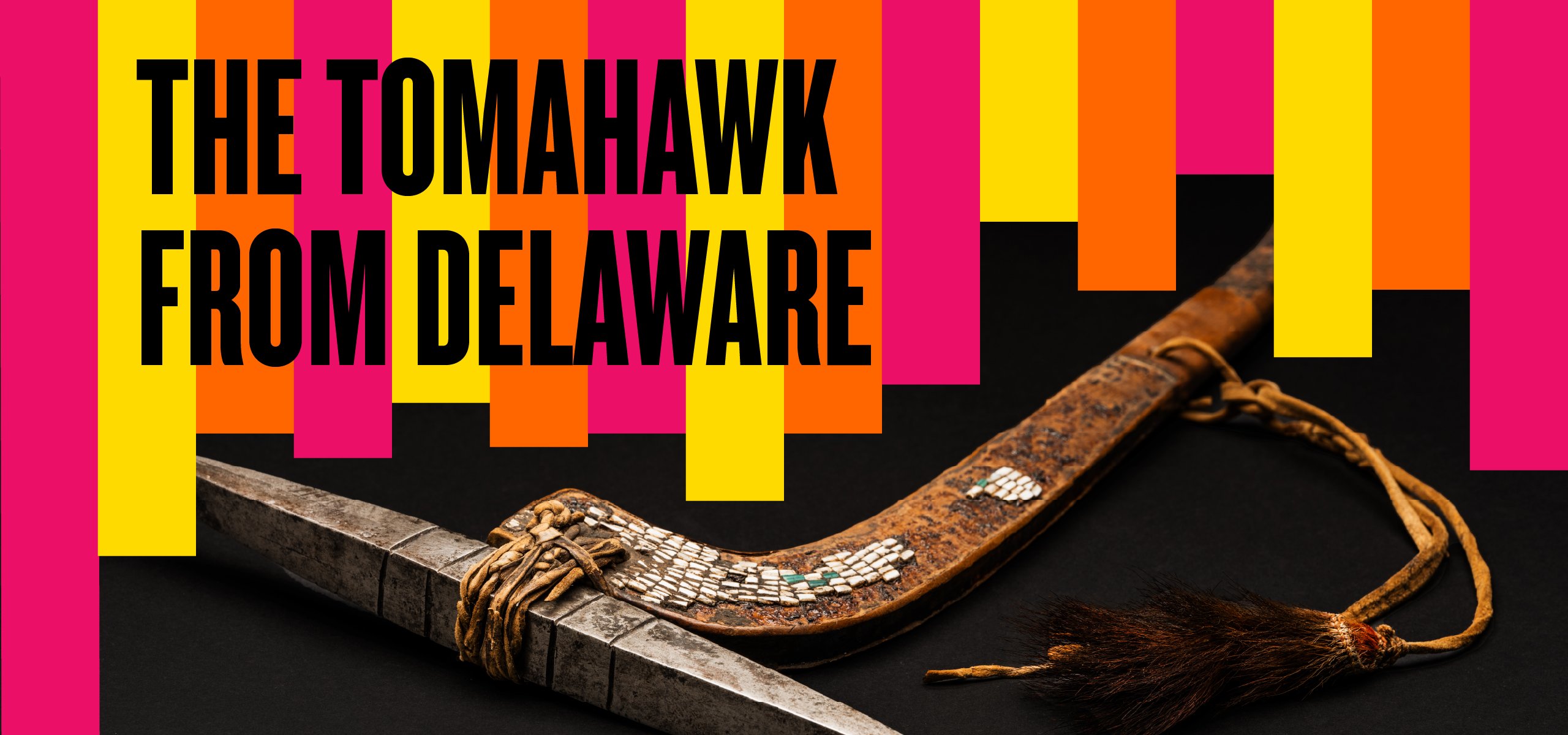

Inventory number: 1889.04.4179
Year made: 1600-1680 A.D.
Origin: North America
As the key object of the Museum of Ethnography, we have chosen a tomahawk, a type of axe. It has a steel blade and a curved wooden shaft decorated with small pieces of white seashell, wampum, and a few green glass beads. Attached to the shaft is a red-dyed fur tuft fastened with a leather strap. It has been established that the tomahawk was a gift to Sweden’s King Charles XI (1655–1697) from Johan Printz (1592–1663), governor of the Swedish colony of New Sweden (1638–1655) at the mouth of the Delaware River in northeastern America. It is therefore likely that the tomahawk comes from that region and was crafted by artisans from the Lenape or Susquehannock peoples.
The tomahawk was made around the mid-17th century and arrived in Sweden while it was still relatively new. In 1686 it was entered for the first time into the inventory of the Royal Armoury (Livrustkammaren). In 1906 it was transferred from there to the ethnographic department of the Swedish Museum of Natural History and in 1930 became part of the collections of the Museum of Ethnography. The tomahawk was previously displayed at the museum in the permanent exhibition on North America (2008–2024).
In the museums’ ambition to depict the complex histories of colonialism, the tomahawk from Delaware is a natural choice. It comes from a region that was once a Swedish colony. It testifies to the nation’s colonial ambitions and highlights the role of the royal family. The tomahawk is also interesting as a hybrid object from a colonial contact zone, composed of materials from different sources and possibly different times.
The National Museums of World Culture are here collaborating with the Sámi artist duo JohdetXPirak, Lina Johdet (b. 1987) and Kristoffer Unga Pirak (b. 1987). Both have roots in the inland of Norrbotten and are today based in Undersåker, Jämtland. In their artistic practice, they have created works in various media and used both snow and traditional Sámi crafts. At the Museum of Ethnography, they want to give the tomahawk from Delaware the opportunity to tell its own story, and we look forward to sharing their work with the public.